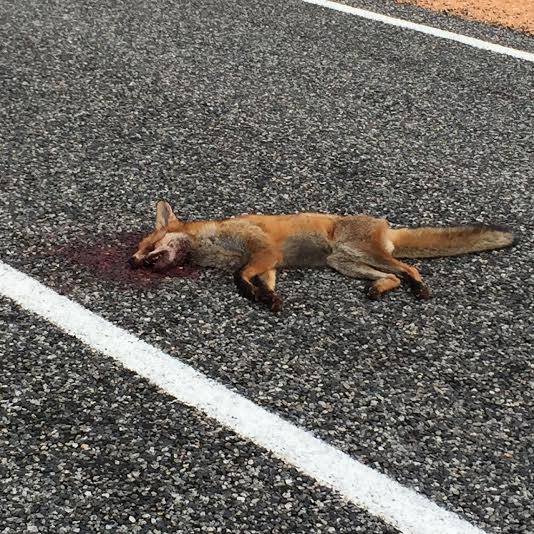The European Red Fox (Vulpes vulpes) was introduced to Australia for recreational hunting in 1855 and has since spread across ~76% of the continent. Foxes breed best in locations of winter rainfall and as such, do best in the southern half of NT, however they are moving northwards and are now found as far north as Tennant Creek and the Barkly region. An individual seen by Bill Low along Colonel Rose Drive in 1981 was in excellent condition, whereas one found later in 1988 near Barkley was scrawny and emaciated. While foxes are known to be in central Australia, their numbers somewhat correlate with the presence of dingoes (foxes are less prevalent when dingoes are in abundance, possibly influencing where and when foxes can hunt).
The fox scavenges and preys on anything that is available, particularly small mammals and reptiles, but occasionally insects and fruit when prey is scarce. The fox has contributed to the decline of ground-nesting birds, small mammals and reptiles. Predation by the European Red Fox is listed as a key threatening process under the Commonwealth Environment Protection and Biodiversity Conservation (EPBC) Act 1999, and as such the Australian Government has implemented a Threat Abatement Plan that aims to reduce the impact of foxes. The plan includes fox control and management programs, education of land managers and dissemination of information regarding the impact of foxes in Australia.
Fox control has had mixed success around Australia. Locally, the Central Land Council and Parks and Wildlife NT was involved in the trial of specialised bait stations that deliver poison to foxes but limit access to poison for dingos. This technique had some success but further trials were postponed (2010). Other control methods include shooting, trapping, den fumigation and fencing.
Read more about foxes in the fact sheet European Red Fox.
Categories:
Ferals, Uncategorized
